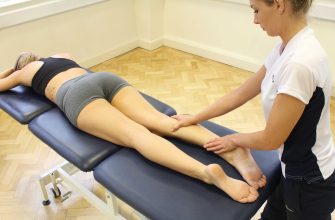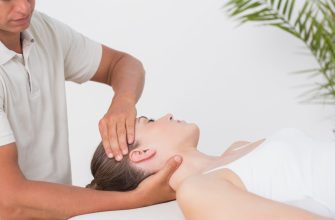Hydro massage (or hydromassage) is a therapeutic technique that uses heated water, ejected under pressure through jets, to perform a massage on the body. Instead of human hands, you receive the massage from targeted streams of warm water.
You typically experience it in one of two ways:
- In a specialized bed or table: You lie fully clothed on a flat surface with a waterproof cover. Beneath the cover, a series of jets move along a track, targeting your back, glutes, and legs.
- In a chair or pod: You sit in a chair that has jets targeting your back, or you lie in a pod that surrounds more of your body.
The user can usually control the water temperature, jet pressure, and the specific area of focus.
What Does It Help With? (Benefits & Effects)
Hydro massage is primarily used for relaxation and to address common musculoskeletal discomforts. The effects are a combination of heat therapy and mechanical pressure.
- Muscle Relaxation: The warm water and pressure help to soothe tense, tight, and overworked muscles, reducing spasms and promoting a state of calm.
- Improved Circulation: The combination of heat and mechanical action helps to dilate blood vessels, increasing blood flow to the soft tissues. This delivers more oxygen and nutrients while helping to flush out metabolic waste like lactic acid.
- Pain Relief: It can be effective for managing general aches and pains, including chronic lower back pain and stiffness. The relaxation and improved circulation contribute to this analgesic effect.
- Reduced Stress and Anxiety: The relaxing nature of the warm water and rhythmic massage promotes the release of endorphins (feel-good hormones) and can lower cortisol levels (the stress hormone).
- Improved Recovery: Many athletes and active individuals use it post-workout to help reduce muscle soreness (DOMS – Delayed Onset Muscle Soreness) and speed up recovery.
- Enhanced Flexibility: By relaxing muscles and increasing blood flow, it can temporarily improve range of motion and flexibility.
What are the Contraindications? (Who Should Avoid It)
While generally safe, hydro massage is not suitable for everyone. Key contraindications include:
Absolute Contraindications (Do NOT use):
- Deep Vein Thrombosis (DVT) or Blood Clots: The massage and increased circulation could dislodge a clot, leading to a life-threatening pulmonary embolism.
- Contagious Skin Infections or Open Wounds: To prevent the spread of infection and avoid irritating the wound.
- Pregnancy (especially the first trimester): The heat and intense pressure on the lower back and abdomen are not recommended without explicit doctor approval.
- Severe Heart Disease or Uncontrolled High Blood Pressure: The therapy can place additional strain on the cardiovascular system.
- Recent Surgery or Fracture: The area needs to heal without the stress of mechanical pressure.
- Active Cancer or Tumors: The effects of massage on cancer spread are complex, and medical oncologist approval is essential.
- Fever or Systemic Illness: Your body is already under stress.
Relative Contraindications (Use with Caution or Avoid Certain Areas):
- Sensitive Skin or Certain Skin Conditions: The pressure and heat could cause irritation.
- Herniated Disc or Severe Osteoporosis: Use lower pressure settings and get doctor approval first.
- Diabetes with Neuropathy: Reduced sensation can make it difficult to gauge if the water is too hot or the pressure is too high, leading to accidental burns or injury.
Do I Need to Consult a Doctor Before It?
It is highly recommended to consult your doctor before trying hydro massage if:
- You have any diagnosed medical condition, especially those listed in the contraindications above (heart issues, DVT, cancer, etc.).
- You are pregnant.
- You have recently had surgery or an injury.
- You are experiencing severe, unexplained pain.
For a generally healthy individual using it for general wellness and relaxation at a moderate setting, a consultation may not be necessary. However, if you have any doubts or pre-existing conditions, erring on the side of caution and talking to your doctor is the safest approach.
How Often Can I Do It?
The frequency depends entirely on your individual goals and how your body responds.
- For General Wellness and Relaxation: 1-3 times per week is a common and safe frequency.
- For Post-Workout Recovery or Pain Management: You could use it after every workout or even daily for short periods (e.g., 10-15 minutes), provided you have no adverse reactions like skin irritation or increased pain.
- Listen to Your Body: This is the most important rule. If you feel any pain or discomfort during or after the session, reduce the frequency, duration, or pressure. Hydromassage should feel soothing and beneficial, not painful.
A typical session lasts between 10 and 30 minutes. Starting with shorter sessions and gradually increasing the time is a good practice.







